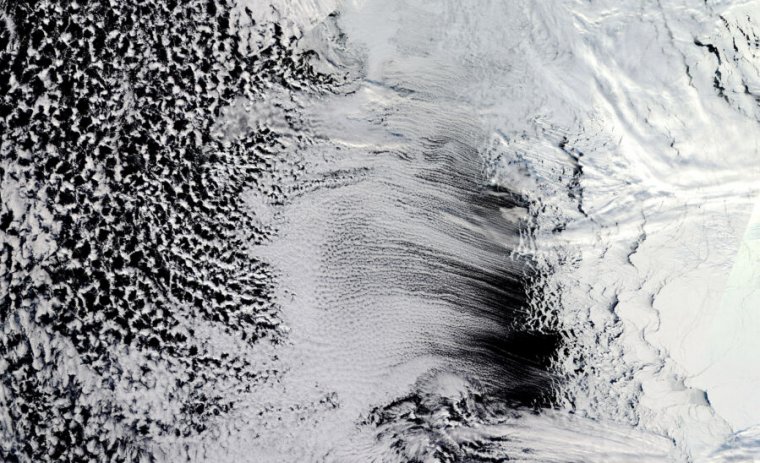Using pristine Southern Ocean air to estimate pre-industrial pollution

Enlarge / Long lines called "cloud streets" forming off the edge of Antarctic sea ice. (credit: NASA EO)
One of the lesser-known scientific complications that makes assessing human-caused climate change a hassle is that it isn't all about greenhouse gases. Emissions of aerosols-tiny atmospheric particles from a variety of sources that scatter sunlight back to space, for example-have acted to offset a portion of the human-caused warming. And unlike long-lived greenhouse gases, aerosols wash out of the atmosphere quite quickly and leave no historical record. That makes reconstructing aerosol levels going back before the Industrial Revolution a challenge.
To improve and cross-check estimates of past aerosol levels, researchers have gotten creative. A new study led by Isabel McCoy at the University of Washington uses the fact that the skies around Antarctica are close to free from human-caused aerosol pollution to set a new pre-industrial baseline.
Aerosols have a cooling influence through both direct (scattering sunlight) and indirect (modifying clouds) effects. In this case, the researchers are looking at the latter by using satellite cloud data. Specifically, they calculate the number of cloud droplets per cubic centimeter based on measurements of droplet size and cloud thickness. Because aerosols can act as condensation nuclei around which droplets form, they tend to lead to higher levels of smaller droplets.
Read 7 remaining paragraphs | Comments